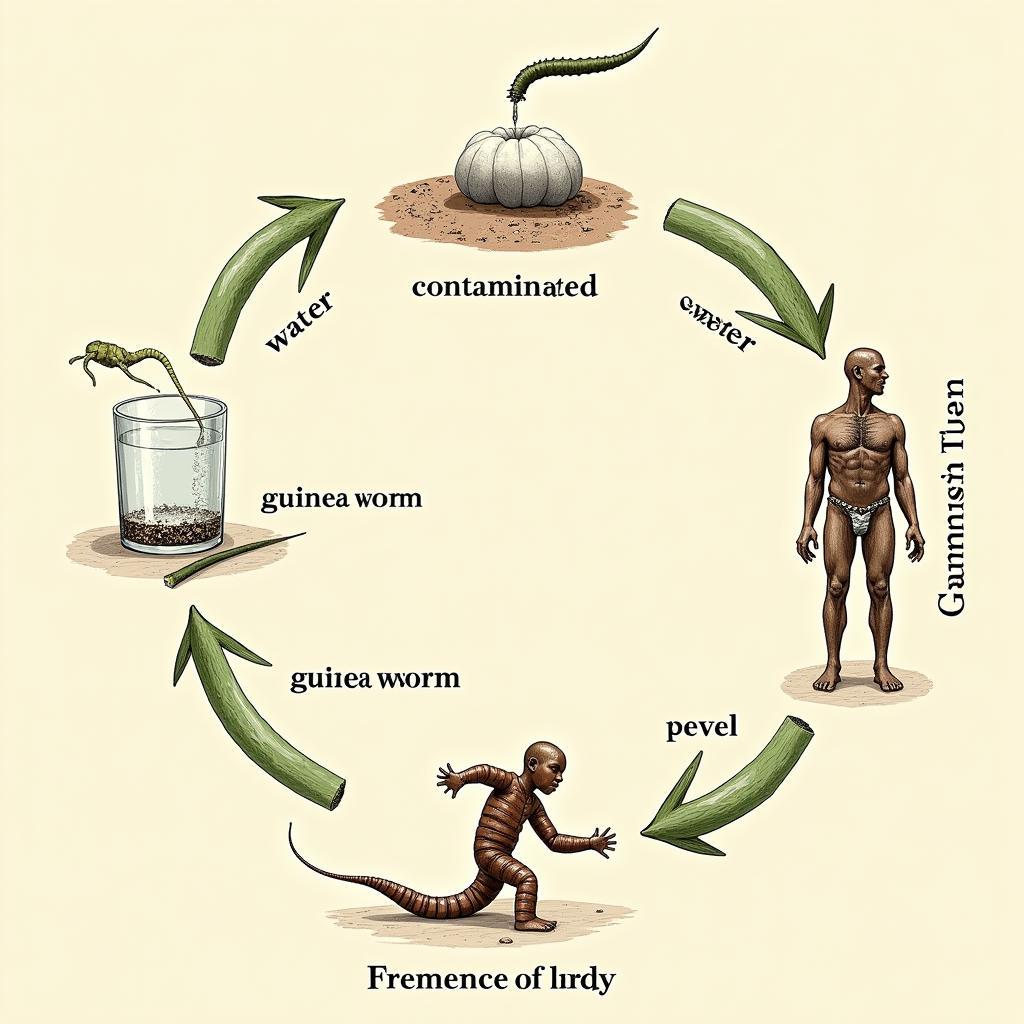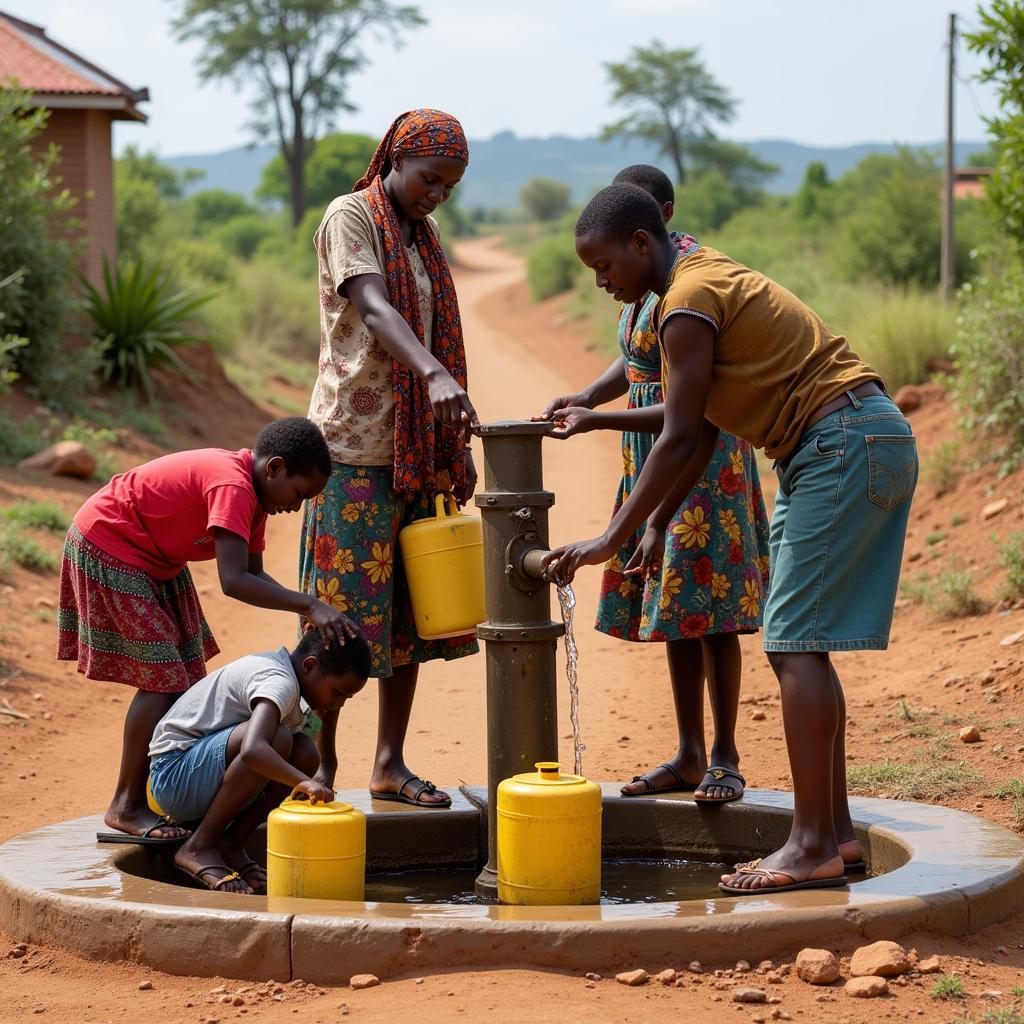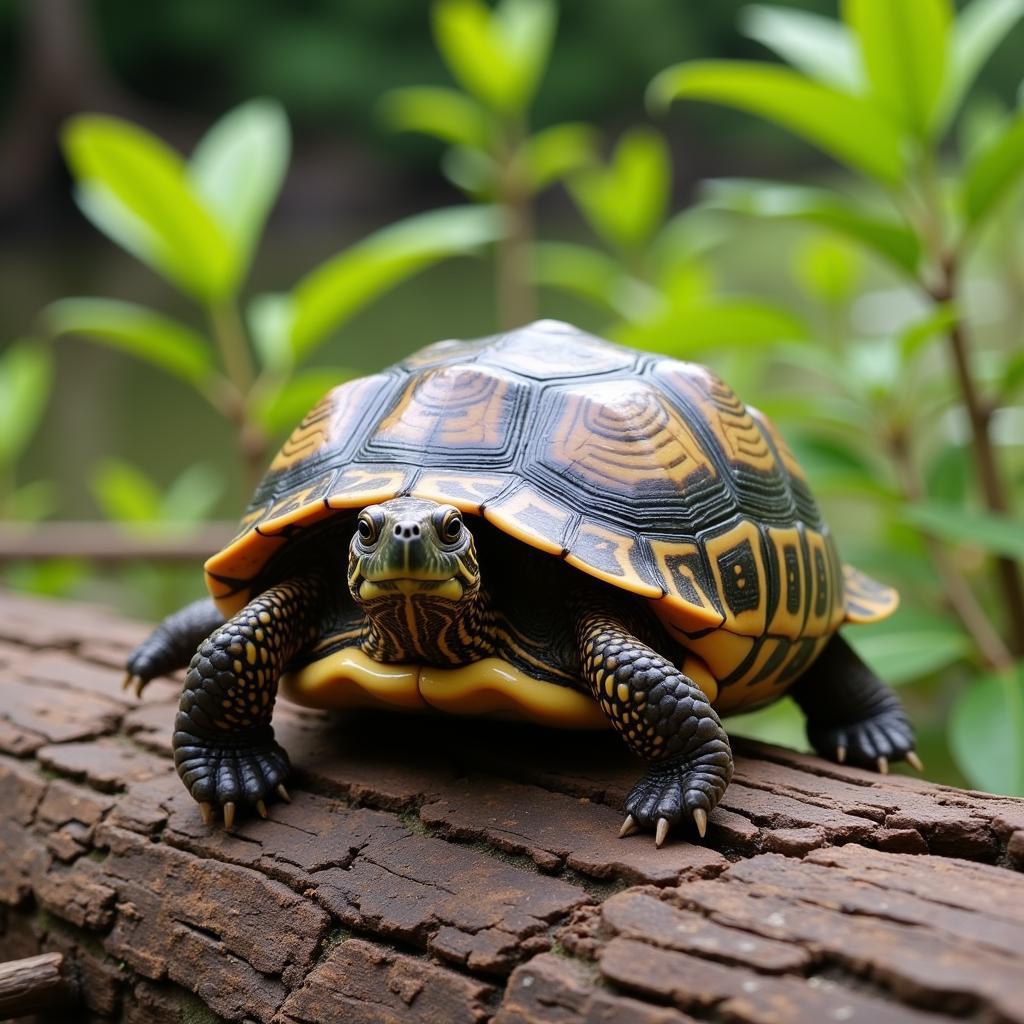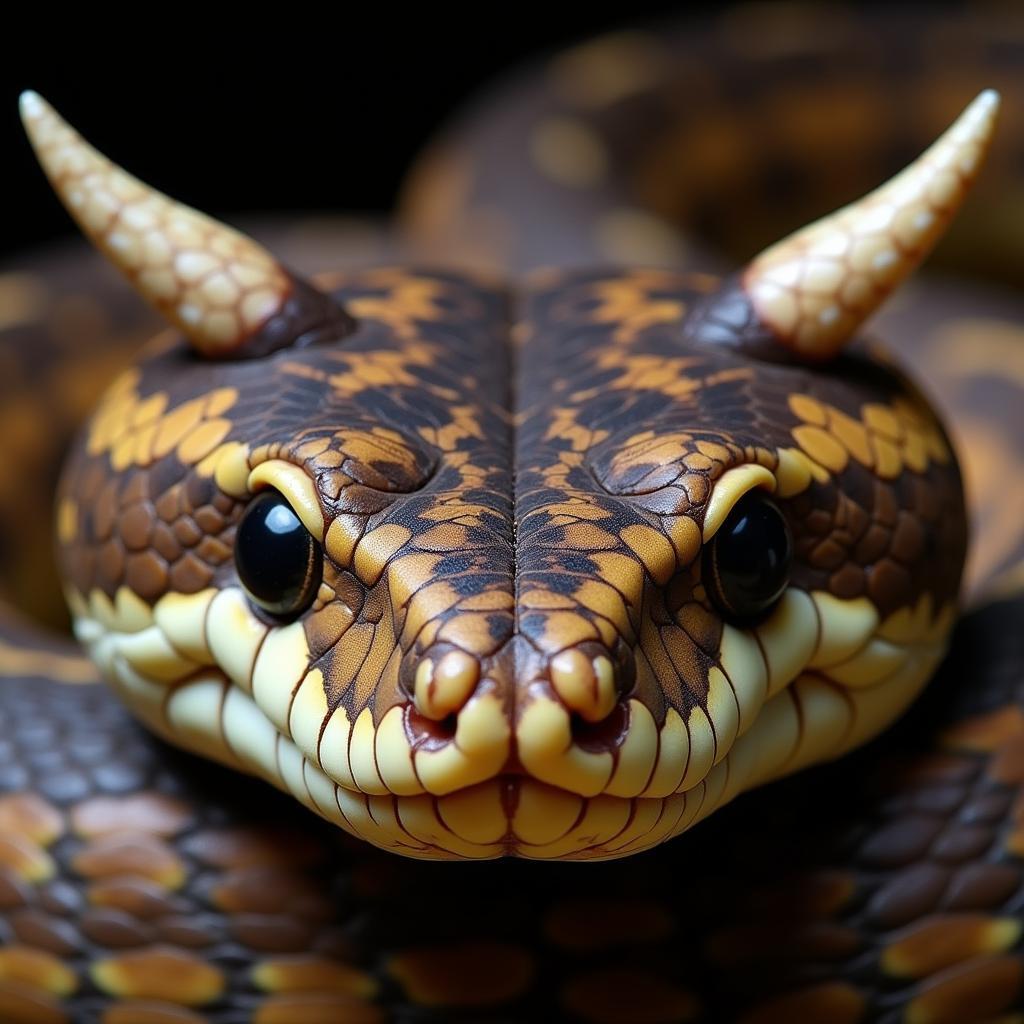Unraveling the Mystery of the African Guinea Worm
The African Guinea Worm, scientifically known as Dracunculus medinensis, is a parasitic worm that has plagued humanity for centuries. This debilitating disease, primarily found in remote communities in Africa, is contracted through contaminated water sources. Understanding the life cycle of the guinea worm, its impact on individuals and communities, and the ongoing efforts to eradicate this ancient disease is crucial in the fight for global health equity.
A Silent Threat: Understanding Guinea Worm Disease
The guinea worm disease, dracunculiasis, is caused by the female guinea worm, a long, thread-like parasite that can grow up to three feet in length. Unlike many other parasitic worms, the guinea worm doesn’t spread through the air or through insect bites. Instead, it finds its way into the human body through contaminated drinking water.
 Guinea worm life cycle illustration
Guinea worm life cycle illustration
When a person drinks water contaminated with guinea worm larvae, the larvae are ingested and begin to mature in the human host’s abdomen. After about a year, the female worm, now fully grown, creates a painful blister on the skin, usually on the lower limbs. This blister causes a burning sensation and eventually bursts, revealing the worm.
“The pain caused by the emerging worm is excruciating,” shares Dr. Abena Agyemang, a physician specializing in tropical diseases. “People often describe it as feeling like hot oil is being poured on their skin.”
The Socioeconomic Impact of Guinea Worm Disease
Beyond the immediate physical suffering, guinea worm disease has a significant impact on the socioeconomic well-being of affected communities. As the painful blister develops, individuals, often breadwinners, are unable to work, attend school, or tend to their crops. This loss of productivity leads to economic hardship for families and communities already grappling with poverty.
 An African community gathering water
An African community gathering water
The social stigma associated with the disease further isolates individuals, making it challenging to seek help or support. The visible, debilitating nature of the disease often leads to discrimination and fear within communities.
The Global Fight to Eradicate Guinea Worm Disease
Despite the challenges, the fight against guinea worm disease has seen remarkable progress. In the 1980s, an estimated 3.5 million cases were reported annually across 21 countries in Africa and Asia. Today, thanks to the collaborative efforts of organizations like The Carter Center, the World Health Organization, and governments across the globe, the number of cases has reduced dramatically.
The eradication strategy centers around a multi-pronged approach: providing access to safe drinking water, educating communities about the disease and its prevention, and actively containing outbreaks through surveillance and case management. Simple yet effective techniques, such as filtering drinking water through a cloth and preventing infected individuals from entering water sources, have played a significant role in reducing the spread of the parasite.
The Final Push Towards a Guinea Worm Free World
While the world stands on the cusp of eradicating guinea worm disease, continued vigilance and commitment are crucial. Maintaining political will, securing funding for surveillance and response efforts, and addressing the remaining challenges in conflict-affected regions are critical to achieving the goal of a world free from this ancient scourge.
The story of the fight against guinea worm disease is a testament to the power of global collaboration, public health interventions, and community engagement. With continued effort, the world can soon celebrate the eradication of this preventable disease and rewrite the narrative of health equity for generations to come.
FAQs about Guinea Worm Disease
1. Can guinea worm disease be fatal?
While death from guinea worm disease is rare, the secondary infections caused by the open wound can be life-threatening if left untreated.
2. How is guinea worm disease diagnosed?
Diagnosis is usually made through a clinical examination, specifically by identifying the characteristic blister and the emerging worm.
3. Is there a cure for guinea worm disease?
There is no specific medication to treat or cure guinea worm disease. Treatment involves carefully extracting the worm from the wound over a period of days or weeks and managing pain and secondary infections.
4. What can I do to prevent guinea worm disease?
If you are traveling to areas where guinea worm disease is still present, it is essential to drink only safe, filtered water, avoid entering stagnant water sources, and practice good hygiene.
5. When is the world expected to eradicate guinea worm disease?
The World Health Organization has set a goal to interrupt transmission of guinea worm disease globally.
Can you tell me more about…?
- Interested in other fascinating creatures found in Africa? Learn about the unique african hairy frog.
We are dedicated to sharing the wonders and stories of Africa. For any inquiries, please contact us:
Phone: +255768904061
Email: kaka.mag@gmail.com
Address: Mbarali DC Mawindi, Kangaga, Tanzania
Our customer support team is available 24/7 to assist you.



